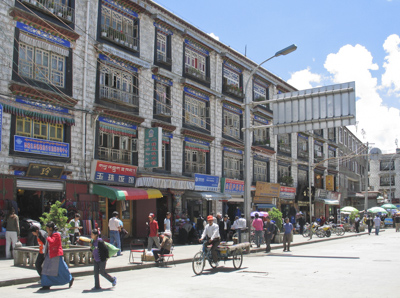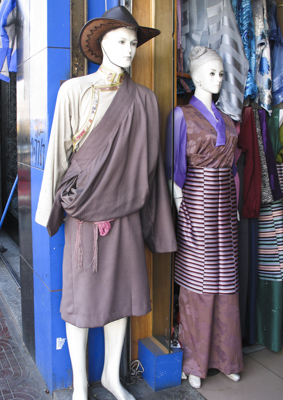August 20, 2007
Our Tibetan guide kept reminding us to move slowly and take rests to avoid altitude sickness. We drove to the center of Lhasa and walked slowly around the bustling city. Potala Palace, the former home of the Dalai Lama, was built on Mount Marpori in the city center and dominates Lhasa.

The city lies in the center of a flat river valley surrounded by mountains which rise to elevations of 18,000 feet.

Lhasa has been the religious and administrative capital of Tibet since the mid-17th century. The name translates as “place of gods” in the Tibetan language. The Communist Chinese of the People’s Republic of China invaded the country in 1950. After a massive crackdown by the Chinese government in 1959, the Dalai Lama fled into exile. He currently lives in India.


The weather in August was cool and crisp with bright sunlight. There were many Chinese tourists visiting the city.




We were staying at a Tibetan owned hotel in Lhasa and the guide took us only to Tibetan owned restaurants for lunches and dinners.


The vendor at the fruit stand below was using a home-made scale:


We went to Sera Monastery to watch the daily debate of the monks. The monastery is a complex of structures founded in 1419 by a famous teacher of Tibetan Buddhism and had developed into a renowned place of learning. Sera means “wild roses” which grew at one time on the hills behind the monastery.



Debate has become part of the culture of Buddhist belief and is an essential part of the teaching on the path to enlightenment. Debates were introduced to Tibetan Buddhism during the 7th century and monks in universities spend years studying the art of debate.



Tourists are welcome to quietly watch the debates which are held in an outdoor courtyard. It was fascinating to watch the animated young men practice their skills.





Prayer wheels near Sera Monastery:
